All businesses must have a direct way to communicate with their audience. The best way to do this is to have a quality mailing list. With a good subscriber base of engaged contacts, you can find potential customers, and nurture relationships with your community. We already know that email marketing ROI can be up to $45 per dollar spent, so let’s take advantage of that!
These strategies will help you attract more subscribers to your business’ newsletter.
Effective Strategies to Grow Your Email List
1. Create relevant content
Let’s break down what is “relevant content” in the simplest way possible: it is content that matters to your audience. It lies at the heart of any great content marketing plan.
Demand Metric found that content marketing costs about 62% less than traditional marketing. And that 82% of consumers feel more positive about a company that creates personalized content. In other words, creating content that interests your current customers and prospects is worth the effort.
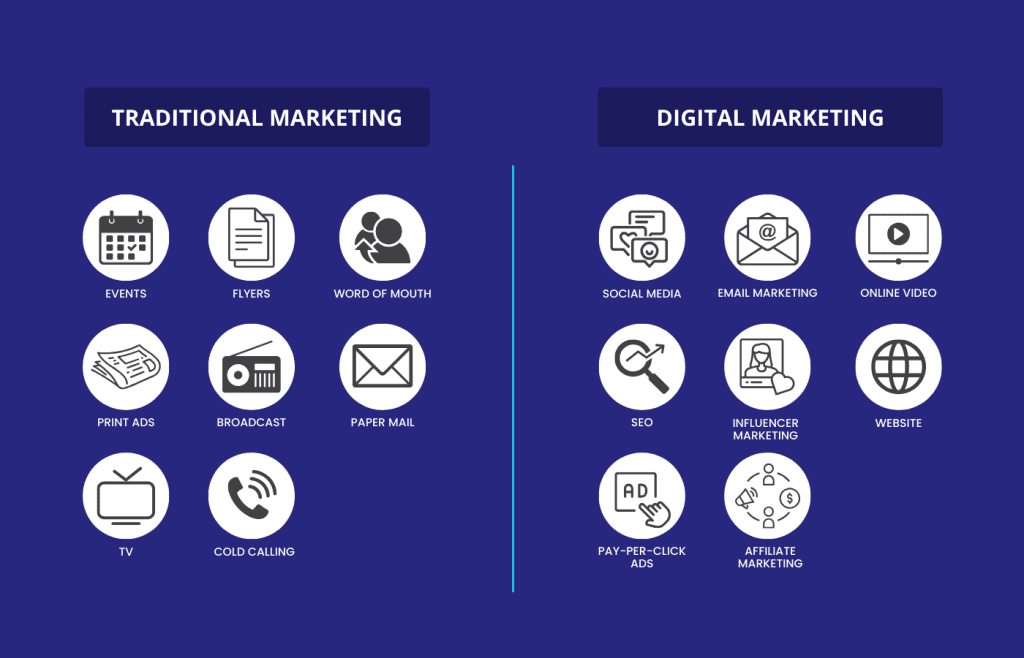
The first thing to do to create said content is to learn about your audience:
- What do they like?
- What are their values?
- How would they respond to a certain situation?
- What are their daily habits?
- What are their struggles?
- How does your product or service impact their lives?
Almost 80% of brands think they’re delivering authentic content, but only 37% of consumers agree.
This speaks volumes to the need to know your audience. Relevant content attracts potential clients, increases brand awareness, and strengthens connections with your brand community.
Start with your content pillars: pick three to four topics that resonate with your audience’s interests and needs. For example, if you are a tourism brand, your content pillars could be packing tips, solo travelling, and travel budget.
As your emails go out, pay attention to your audience’s reaction: open rate, click-through rate, and unsubscribe rate. Use those metrics to adjust your content strategy.
2. Stay tuned to trends and timely topics
Stay tuned to industry news and online trends you can use as a chance to reach a wider audience and stand out. Here are some examples of what you can look out for:
- Holidays: Mother’s Day, Canada Day, Thanksgiving, Black Friday, Christmas.
- Social media trends and memes
- Industry news: new regulations in your field, new studies, events.
- Entertainment and globally known events: the 2024 Eclipse, Met Gala, the Oscars.
Whether you’re a B2C or B2B business, with the right strategy, you can take advantage of timely events. Make sure you have your plan ready for major calendar events like Black Friday and Christmas, and starting sending it early. In this case, early November to early December.
By addressing current events and trends, you can position yourself as a thought leader and show off your brand personality. This email from MacPaw, a software development company, is a great example.
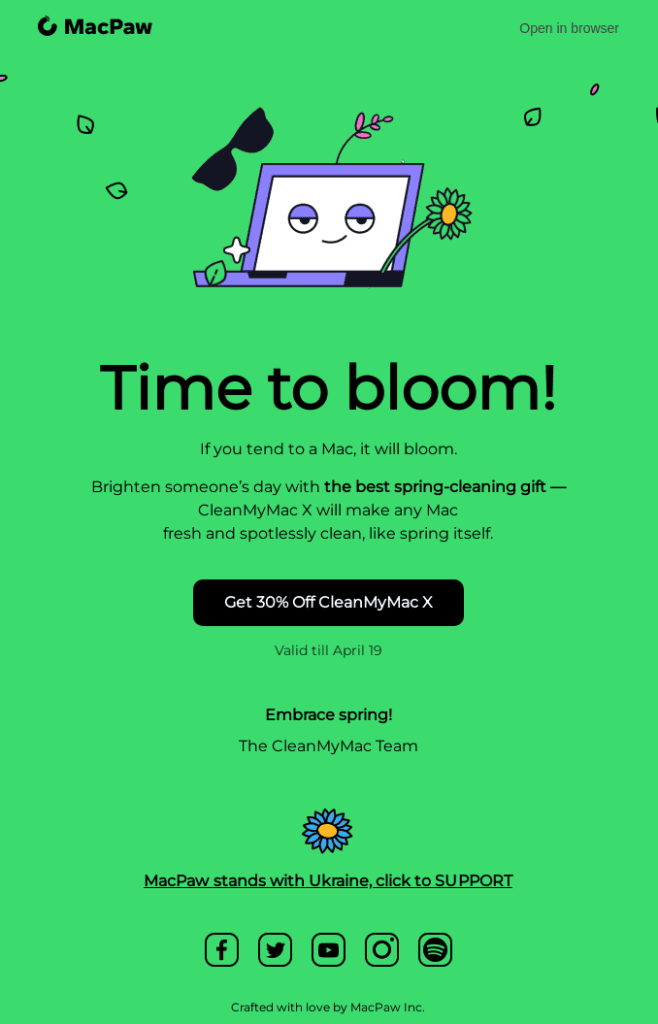
They sent this email to their list of potential customers with a special offer for their software. The message is simple and aligned with the “spring-cleaning” and “fresh” vibes of the season.
3. Promote across channels
To grow your mailing list, you need to reach more people. However, it’s not just “finding people”. A wider reach is about finding your target audience: people who will be interested in your brand, product, service and values.
The more reach you have, the faster you can build your email list. Use different channels to do this, including your website and social media platforms like YouTube, Instagram, Tik Tok and Pinterest.
Pro tip: Industry experts appoint LinkedIn as the social network to do business in 2024. About 40% of its 1.6 billion monthly users engage with a page every week. Plus, LinkedIn pages that post weekly have 5.6x more growth than those that don’t.
Add strategic calls-to-action (CTAs) to your website and landing pages, and ensure your content marketing strategy is aligned across all platforms. If you’re sharing some industry news or insights on a relevant issue, share a few points in a social media post and grow your newsletter where they can read more.
4. Offer incentives (lead magnets)
Lead magnets are a great tool to have in your back pocket to grow your audience. Short videos (tutorials and guides) and text-based lead magnets are the highest converting lead magnets according to this 2023 study.
Like your email content, the lead generation strategy should be relevant to your audience. Those incentives might be the first contact people will have with your brand. Therefore, they should reflect the quality of your brand, product or services.
You can use several types of lead magnets: webinars, guides, whitepapers, e-books, tutorials, discounts, exclusive content…
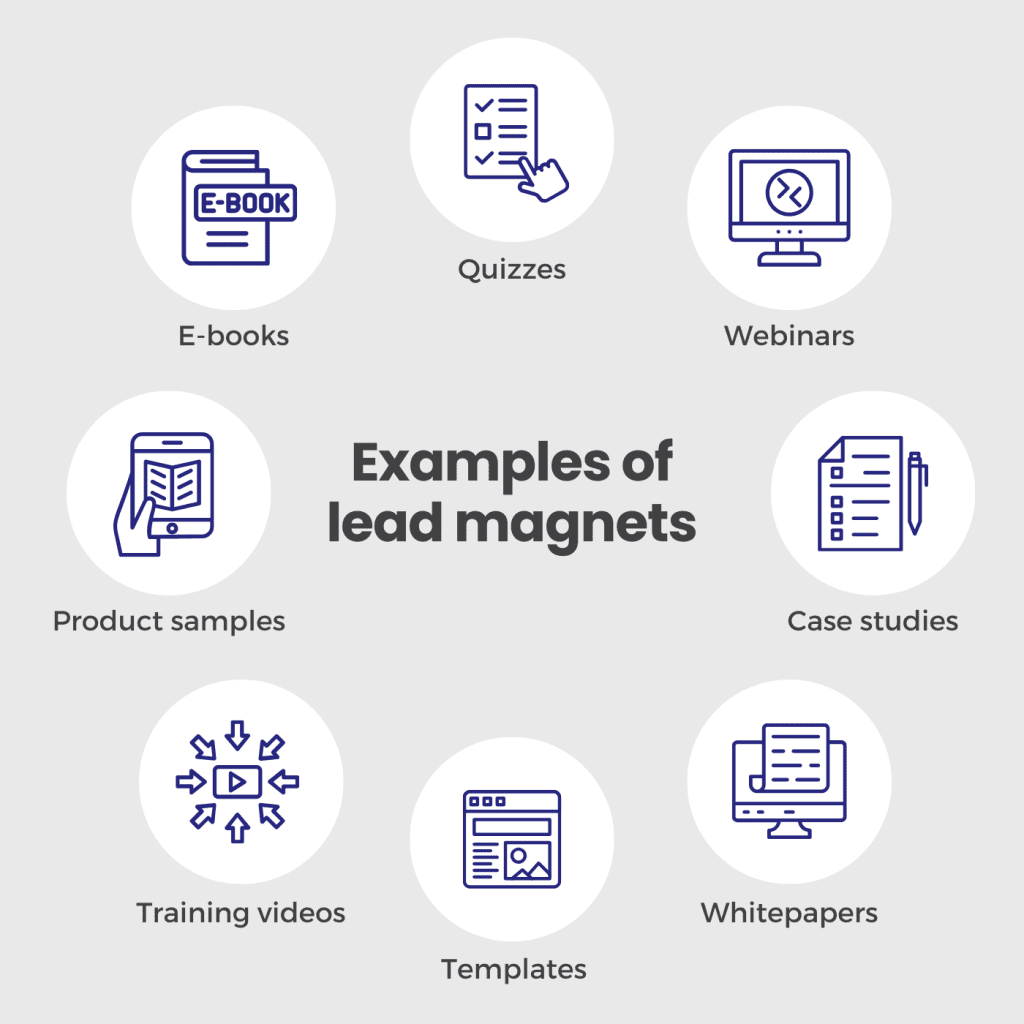
A clothing retailer could offer a 10% discount on their first purchase; a marketing agency could offer an e-book with industry insights; and a hotel could share exclusive booking offers.
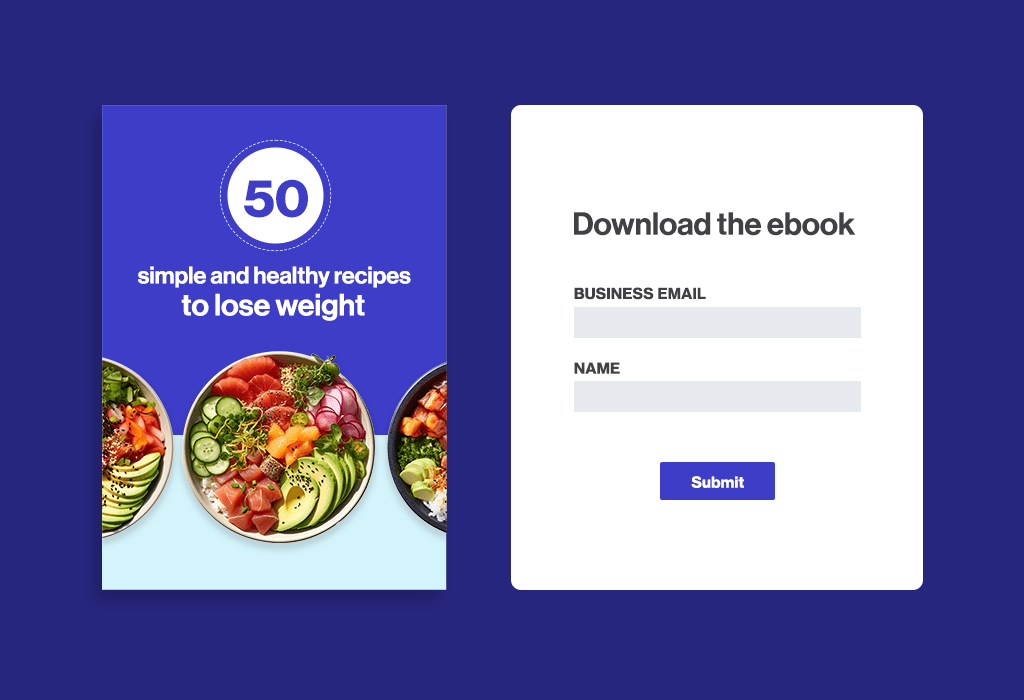
When you offer tangible benefits, you create a compelling reason for people to join your mailing list and kick off your relationship on the right foot.
5. Collaborate with others
When brands partner with each other or influencers and celebrities, they see great results, like when Tim Horton’s launched the Biebs Brew.
Collaboration doesn’t have to always result in a new product launch. You can do guest writing in a blog, write collaborative studies, or host events and webinars.
We have an in-house example to share: every month, the Cyberimpact team hosts webinars with industry leaders and partners. In these webinars, we share insights about email marketing and how businesses can grow using email.
Those collaborations are a great way to meet and connect with other people in our industry and show appreciation to our partners from the ambassador program and clients.
By leveraging each other’s audiences and networks, you amplify your brand’s visibility and attract more subscribers who align with your target demographic. Plus, as we said before, they make a great lead magnet.
6. Monitor email performance
By regularly monitoring key performance metrics, you can track the effectiveness of your email marketing efforts. Metrics such as open rates, click-through rates, and unsubscription rates show how your subscribers react to new email marketing campaigns.

Track large metric variations between campaigns. They could mean there’s something that caught (or lost) your audience’s attention. Try different strategies and content formats to understand what resonates with your audience. This is the best way to make data-driven decisions and avoid wasting time and resources.
7. Engage with your audience
Building relationships with your subscribers is essential for creating loyalty and retention. Take an active approach to engage with your contacts using surveys, polls, or interactive content to get feedback and insights.
Interactive content can also be a great way to re-engage with subscribers who haven’t opened an email in a while. Here’s a great example from the Department of Tourism of South Dakota.
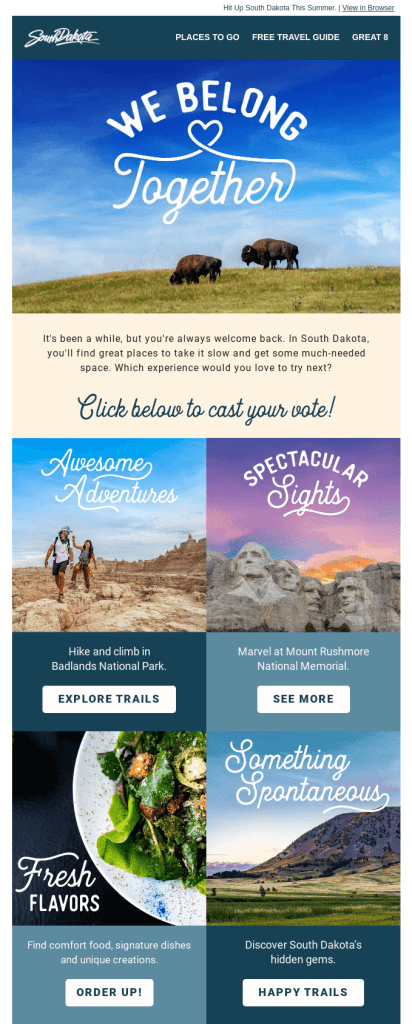
To reconnect with subscribers, they created interactive content using simple images and buttons for their audience to choose the kind of experience they would like to have. Based on where each subscriber clicks, they will see different content — which is also a great segmentation strategy!
Recap and Next Steps
Expanding your mailing list requires a strategic approach and consistent effort. By creating compelling content, covering timely topics, promoting across channels, offering incentives, collaborating with others, monitoring performance, and engaging with subscribers – you can grow your subscriber base and your email marketing results.
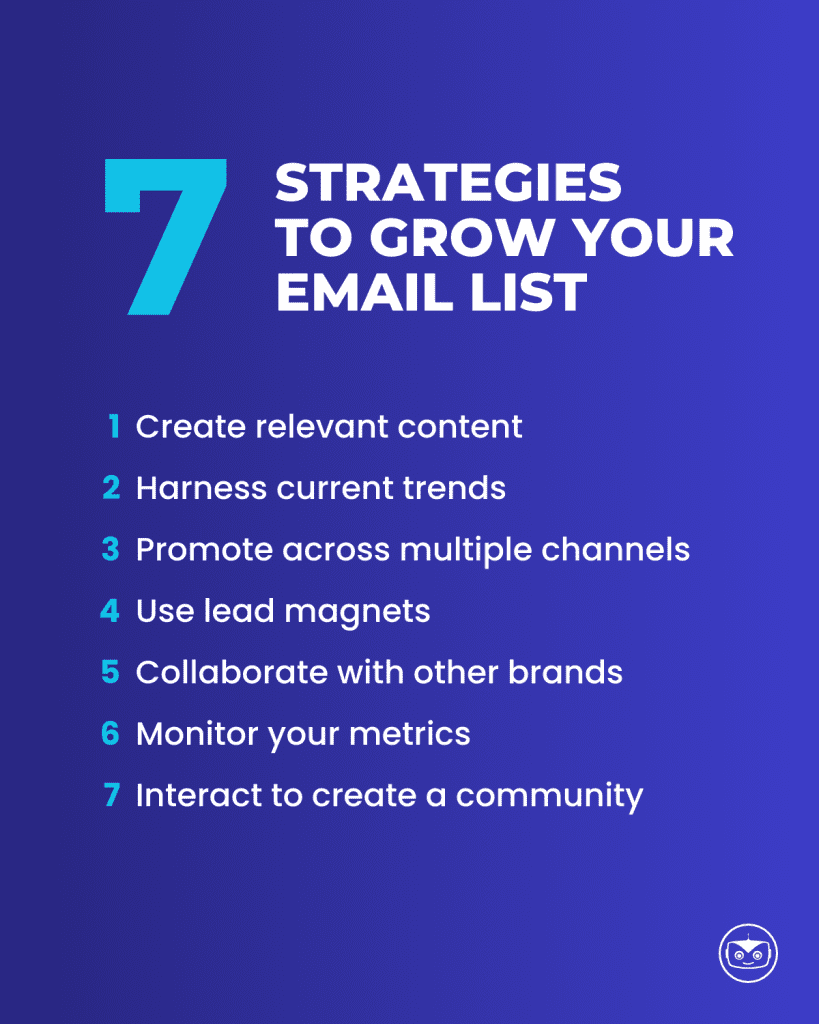

Very interesting! Thank you for sharing this information. It really provides food for thought and enriches the discussion. Looking forward to seeing more similar contributions in the future! This comment is polite, encouraging, and general enough to fit various types of content while being positive and engaging.